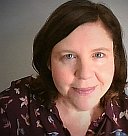
We recently saw “Sarah” (*not her real name), and would love to share how we helped her to reduce her IBS symptoms and improve her life enormously.
Sarah is a 46 year old woman, who owns her own very stressful business. She had been suffering from bloating, wind, cramping, gut pain and explosive diarrhoea for many years. Some days would see her going to the toilet up to 12 times a day. This was making a huge impact on Sarah’s everyday life and on her business. Trying to make plans for meetings was impossible. She did a lot of driving but couldn’t go very far without having to stop at services along the way. It was really getting her down. She had started to cut foods out to see if this helped. It didn’t and she was just becoming afraid to eat.
Sarah went to see a gastroenterologist, who ran all of the tests to rule out conditions like coeliac disease, ovarian and bowel cancer and since she had the “all clear” for these conditions, she was diagnosed with IBS- D, (Diarrhoea- dominant IBS). She then came to see us, to try out the Low FODMAP Diet.
Dietetic Visit
Sarah came to see us to see if she could try the Low FODMAP diet, as the Doctor had told her it would make a difference. We were happy to help.
We got to know Sarah- finding out who she is, what her life is like and how we could help. We found out:
- What her current situation was and what she hoped to get out of her visit.
- The history of her condition and symptoms
- The severity/impact of her symptoms
- Her medical history- other health conditions, test results, medications
- About life- family, work, activities, exercise, sleep pattern, stress levels
- If she had experienced any changes in her weight
- What she had tried to help her IBS symptoms
Checking out the Diet.
We then discussed Sarah’s usual everyday diet to see how her symptoms matched up with mealtimes and to see if there were any changes she could make to reduce symptoms and to make her life better.
Sarah had come to see us to try the Low FODMAP Diet but, after looking at her diet and lifestyle, we found that there were some simple “first line” changes that Sarah needed to make before launching into the Low FODMAP elimination and challenge plan.
Sarah’s eating pattern was really irregular – she skipped breakfast here and there, ate frequent take-aways in the car on work visits, drank a lot of coffee and had very little variety or fibre in her diet. She had a really stressful life and wasn’t sleeping very well.
We recommended making some changes before thinking about the Low FODMAP Diet. Sarah was a bit surprised, and disappointed, at first but we explained that following the Low FODMAP Diet is quite a commitment and may not even have been needed. She could just discover that making baseline changes like – including regular balanced meals, mindful eating, drinking water and reducing coffee, and concentrating on getting the right types of fibre into the diet could help. In fact, lots of these feature in the Low FODMAP Diet as well so it would definitely be an advantage for Sarah to regulate her eating patterns before trying it.
Since Sarah had a busy life and a family, and hadn’t realised the Low FODMAP Diet would involve quite a change, she agreed to try these adjustments first and to come back to see us in a few weeks to see if they made a difference. We gave Sarah a food and symptom diary to complete – so that we could track any changes.
After a Few Weeks
Sarah returned with her food and symptoms diary and with lots to tell us! She had made so many changes and was feeling great. She was eating regular meals, had included good fibre sources, cut down on the coffee and had started using a “stress reducing” app. She had also started to make time for her meals and to work on getting better sleep.
She had some changes in symptoms:
- Fewer trips to the toilet
- Less pain and cramping
- Bonus : more energy
But, even though things were better, her stools were still quite loose and there were some issues with bloating…so we decided to move to phase 2, the Low FODMAP Diet.
Click like and share for this post and for part 2 to see how Sarah went with the Low FODMAP Diet
*“Sarah” gave their permission for us to tell their story. Certain details have been changed to retain their anonymity.






Hi, I have suffered for a few years with bloating, pain. I have been a few time the gastro clinic and they want me to go on a LowFod diet but it looks like a mind field. So I need some help
Hi Nadine,
Yes it’s really difficult as so many people are just told to go on the diet without any support. There are a few issues:
1) The Low FODMAP Diet is one approach but some people don’t even need to try it. We always check if first line strategies will make a difference first.
2) There is a lot to know about the Low FODMAP Diet – and it’s not just knowing which foods are or aren’t. Things like other food triggers making sure people eat enough of the low FODMAP fibre containing foods and other lifestyle factors have to be taken into account.
3) The Low FODMAP Diet was never designed to be a diet to follow forever. In fact, following it long term can cause problems. The main thing is to use it to expand your choices, rather than to restrict!
One of our Dietitians can help guide through the process if you would like to email for more information.